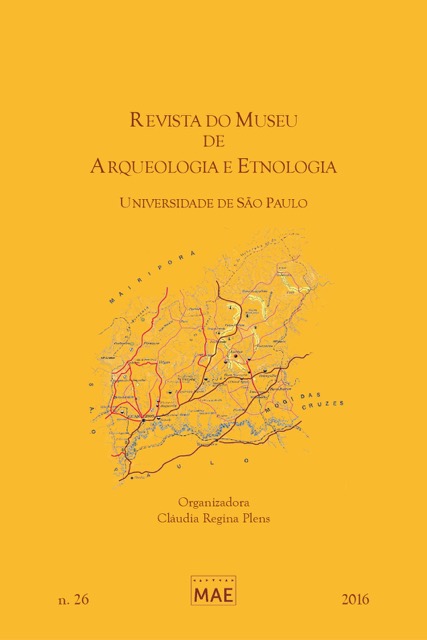GIS Mapping in the Research and Inventory of Guarulhos’s Archaeological Heritage (PIPAG).
DOI:
https://doi.org/10.11606/issn.2448-1750.revmae.2016.119013Keywords:
digital humanities, geotechnologies, historical GIS, Guarulhos historyAbstract
The archaeological heritage mapping performed by the PIPAG Project used digital geotechnologies, more specifically the Geographic Information System (GIS). This article aims to discuss the chosen methodology, but not without first contextualizing it in terms of the impact, challenge and opportunities it represents considering the growing presence of these technologies in the historian routine. The account of our experience does not only exemplify the appropriateness of this technology for research spatialization in terms of the PIPAG, but also emphasizes its capacity to develop it in a widely synergic manner, as it allows the articulation among various initiatives and other participating research projects.
Downloads
References
Gregory, I.; Ell, P. 2007. Historical GIS: Technologies, methodologies and scholarship. Cambridge: Cambridge
University Press.
Guest Editorial. 2004. “GRASS as Open Source Free Software GIS: Accomplishments and Perspectives”.
Transactions in GIS, 8 (2): 145-54.
Ell, P.S.; Gregory, I.N. 2001. History and Computing, v. 13 (1).
Knowles, A. (Ed.). 2008. Placing history: how maps, spatial data, and GIS are changing historical scholarship. Redlands: Esri Press.
Plens, C.R. 2011. Pesquisa e Inventário do Patrimônio Arqueológico de Guarulhos. Projeto de Pesquisa.
Siebert, L. 2000. “Using GIS to document, visualize, and interpret Tokyo’s Spatial History”. Social Science History, 24 (3): 537-74.
Knowles, A.K. 2000. Social Science History, v. 24 (3). Páginas da Internet consultadas:
- http://www.informatik.uni-trier.de/~ley/db/journals/tgis/tgis8.html. Acesso em: 12 abr. 2015.
- www.gvsig.org. Acesso em: 12 abr. 2015.
- www.unifesp.br/himaco. Acesso em: 12 abr. 2015.
- http://maps.google.com.br/. Acesso em: 12
abr. 2015.
- http://splink.cria.org.br/conversor. Acesso
em: 12 abr. 2015.
Downloads
Published
Issue
Section
License
Copyright (c) 2016 Luis Ferla, Karina de Oliveira Oyakawa, Jaine Aparecida Diniz, Orlando Guarnier Cardin Farias

This work is licensed under a Creative Commons Attribution-NonCommercial-NoDerivatives 4.0 International License.













